Local effects of delayed food
- PMID: 17465314
- PMCID: PMC1832169
- DOI: 10.1901/jeab.2007.13-06
Local effects of delayed food
Abstract
Five pigeons were trained on a procedure in which seven concurrent variable-interval schedules arranged seven different food-rate ratios in random sequence in each session. Each of these components lasted for 10 response-produced food deliveries, and components were separated by 10-s blackouts. We varied delays to food (signaled by blackout) between the two response alternatives in an experiment with three phases: In Phase 1, the delay on one alternative was 0 s, and the other was varied between 0 and 8 s; in Phase 2, both delays were equal and were varied from 0 to 4 s; in Phase 3, the two delays summed to 8 s, and each was varied from 1 to 7 s. The results showed that increasing delay affected local choice, measured by a pulse in preference, in the same way as decreasing magnitude, but we found also that increasing the delay at the other alternative increased local preference. This result casts doubt on the traditional view that a reinforcer strengthens a response depending only on the reinforcer's value discounted by any response-reinforcer delay. The results suggest that food guides, rather than strengthens, behavior.
Figures
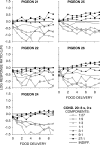
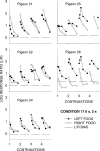
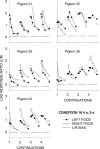
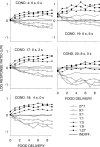
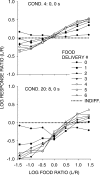
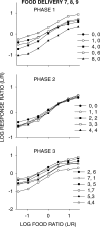
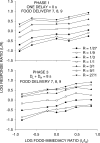
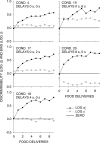
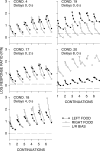
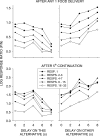
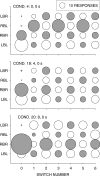
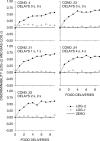
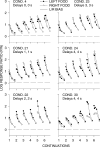
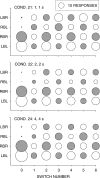


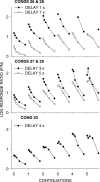
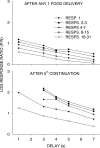
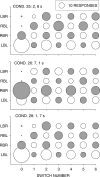
Similar articles
-
Concurrent-schedule performance in transition: changeover delays and signaled reinforcer ratios.J Exp Anal Behav. 2003 Jan;79(1):87-109. doi: 10.1901/jeab.2003.79-87. J Exp Anal Behav. 2003. PMID: 12696743 Free PMC article.
-
Preference reversal between impulsive and self-control choice.J Exp Anal Behav. 2013 May;99(3):260-76. doi: 10.1002/jeab.23. Epub 2013 Feb 25. J Exp Anal Behav. 2013. PMID: 23440893
-
Choice in a variable environment: effects of blackout duration and extinction between components.J Exp Anal Behav. 2002 Jan;77(1):65-89. doi: 10.1901/jeab.2002.77-65. J Exp Anal Behav. 2002. PMID: 11831784 Free PMC article.
-
Choice between single and multiple delayed reinforcers.J Exp Anal Behav. 1986 Jul;46(1):67-77. doi: 10.1901/jeab.1986.46-67. J Exp Anal Behav. 1986. PMID: 3746189 Free PMC article.
-
Every reinforcer counts: reinforcer magnitude and local preference.J Exp Anal Behav. 2003 Jul;80(1):95-129. doi: 10.1901/jeab.2003.80-95. J Exp Anal Behav. 2003. PMID: 13677611 Free PMC article.
Cited by
-
The Journal of the Experimental Analysis of Behavior at zero, fifty, and one hundred.J Exp Anal Behav. 2008 Jan;89(1):111-8. doi: 10.1901/jeab.2008.89-111. J Exp Anal Behav. 2008. PMID: 18338678 Free PMC article.
-
Reinforcement: food signals the time and location of future food.J Exp Anal Behav. 2011 Jul;96(1):63-86. doi: 10.1901/jeab.2011.96-63. J Exp Anal Behav. 2011. PMID: 21765546 Free PMC article.
-
Choice in quail neonates: the origins of generalized matching.J Exp Anal Behav. 2010 Nov;94(3):315-26. doi: 10.1901/jeab.2010.94-315. J Exp Anal Behav. 2010. PMID: 21541174 Free PMC article.
-
Emergent stimulus relations depend on stimulus correlation and not on reinforcement contingencies.J Exp Anal Behav. 2011 May;95(3):327-42. doi: 10.1901/jeab.2011.95-327. J Exp Anal Behav. 2011. PMID: 21547070 Free PMC article.
-
Dynamics of choice: a tutorial.J Exp Anal Behav. 2010 Sep;94(2):161-74. doi: 10.1901/jeab.2010.94-161. J Exp Anal Behav. 2010. PMID: 21451746 Free PMC article.
References
MeSH terms
LinkOut - more resources
Full Text Sources

